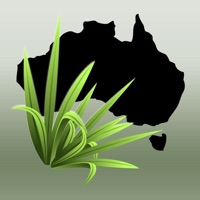
에 의해 게시 에 의해 게시 LucidMobile
1. We are grateful to Anthony Orchard for lending his expertise on Cassinia to this project; Nunzio Knerr for helping with the generation of distribution maps; Miguel de Salas for helpful discussions on the distribution of several species in Tasmania; the herbaria AD, BRI, HO, NE, NSW, and PERTH for making available specimens for study; and Parks Australia for funding through the Bush Blitz Applied Taxonomy grant scheme.
2. The following characters may be particularly useful for quickly narrowing down the possibilities during identification: capitulescence size, capitulescence structure, leaf dimensions, leaf shape, indumentum (hairs) of young leaves and stems, flowering head dimensions, whether involucral bracts are straight or radiating, and, in particular for smaller flowering heads, the number of flowers per head.
3. (Note that leaf hairs refer to the surfaces, that is excepting hair types found only in the mid-rib groove on the upper side of young leaves.) Colour, texture or transparency of involucral bracts are somewhat more subjective and should be used with care, as their interpretation may differ a bit from person to person.
4. The key was produced by CSIRO scientist Alexander Schmidt-Lebuhn and Kirsten Cowley at the Australian National Herbarium (CANB) through funding from the Bush Blitz Applied Taxonomy grant scheme.
5. As currently circumscribed the group comprises the large genera Cassinia and Ozothamnus as well as the small satellite genera Apalochlamys, Calomeria, Haeckeria, Ixodia, Odixia and Paenula.
6. They represent approximately one fifth of the species of the Australian Gnaphalieae, also known as the cudweed or everlasting paper daisy tribe, and are generally woody plants with a centre of diversity in south-eastern Australia.
7. All morphological characters are illustrated, species are illustrated and have distribution maps, and the key provides species profiles and links to the Atlas of Living Australia.
8. Below the character list the user will find options for taxonomic or geographic subselection, allowing for example to restrict the key to Tasmanian Ozothamnus, if so desired.
9. An illustrated multi-access key to the species of the Cassinia group (Asteraceae: Gnaphalieae).
10. Also not covered at this moment are the three informal phrase name taxa Ozothamnus sp.
11. Most of these genera appear to be phylogenetically nested in Ozothamnus sect.
또는 아래 가이드를 따라 PC에서 사용하십시오. :
PC 버전 선택:
소프트웨어 설치 요구 사항:
직접 다운로드 가능합니다. 아래 다운로드 :
설치 한 에뮬레이터 애플리케이션을 열고 검색 창을 찾으십시오. 일단 찾았 으면 Key to the Cassinia group 검색 막대에서 검색을 누릅니다. 클릭 Key to the Cassinia group응용 프로그램 아이콘. 의 창 Key to the Cassinia group Play 스토어 또는 앱 스토어의 스토어가 열리면 에뮬레이터 애플리케이션에 스토어가 표시됩니다. Install 버튼을 누르면 iPhone 또는 Android 기기 에서처럼 애플리케이션이 다운로드되기 시작합니다. 이제 우리는 모두 끝났습니다.
"모든 앱 "아이콘이 표시됩니다.
클릭하면 설치된 모든 응용 프로그램이 포함 된 페이지로 이동합니다.
당신은 아이콘을 클릭하십시오. 그것을 클릭하고 응용 프로그램 사용을 시작하십시오.
다운로드 Key to the Cassinia group Mac OS의 경우 (Apple)
| 다운로드 | 개발자 | 리뷰 | 평점 |
|---|---|---|---|
| Free Mac OS의 경우 | LucidMobile | 0 | 1 |
An illustrated multi-access key to the species of the Cassinia group (Asteraceae: Gnaphalieae). They represent approximately one fifth of the species of the Australian Gnaphalieae, also known as the cudweed or everlasting paper daisy tribe, and are generally woody plants with a centre of diversity in south-eastern Australia. As currently circumscribed the group comprises the large genera Cassinia and Ozothamnus as well as the small satellite genera Apalochlamys, Calomeria, Haeckeria, Ixodia, Odixia and Paenula. Most of these genera appear to be phylogenetically nested in Ozothamnus sect. Ozothamnus, but Ixodia and Ozothamnus sect. Hebelaena are actually more distantly related. The key does not cover two hybrids; Cassinia x adunca is considered to be a hybrid of and intermediate between C. complanata and C. tegulata, and Ozothamnus x expansifolius is a name for any presumed hybrid of O. hookeri regardless of the other parent and thus not a natural unit. Also not covered at this moment are the three informal phrase name taxa Ozothamnus sp. Boonoo Boonoo, O. sp. Ebor Falls, and O. sp. Mt Tomah. The key was produced by CSIRO scientist Alexander Schmidt-Lebuhn and Kirsten Cowley at the Australian National Herbarium (CANB) through funding from the Bush Blitz Applied Taxonomy grant scheme. We would be grateful if mistakes or other feedback were communicated to the first author. The following characters may be particularly useful for quickly narrowing down the possibilities during identification: capitulescence size, capitulescence structure, leaf dimensions, leaf shape, indumentum (hairs) of young leaves and stems, flowering head dimensions, whether involucral bracts are straight or radiating, and, in particular for smaller flowering heads, the number of flowers per head. (Note that leaf hairs refer to the surfaces, that is excepting hair types found only in the mid-rib groove on the upper side of young leaves.) Colour, texture or transparency of involucral bracts are somewhat more subjective and should be used with care, as their interpretation may differ a bit from person to person. The key is deliberately written to minimise the use of technical terms. All morphological characters are illustrated, species are illustrated and have distribution maps, and the key provides species profiles and links to the Atlas of Living Australia. Below the character list the user will find options for taxonomic or geographic subselection, allowing for example to restrict the key to Tasmanian Ozothamnus, if so desired. We are grateful to Anthony Orchard for lending his expertise on Cassinia to this project; Nunzio Knerr for helping with the generation of distribution maps; Miguel de Salas for helpful discussions on the distribution of several species in Tasmania; the herbaria AD, BRI, HO, NE, NSW, and PERTH for making available specimens for study; and Parks Australia for funding through the Bush Blitz Applied Taxonomy grant scheme. Bush Blitz is a partnership between the Australian Government, BHP Billiton Sustainable Communities and Earthwatch Institute. This app was created using the Lucid Mobile platform, part of the Lucid suite of tools. If you are interested in creating a similar app, or for further information on creating interactive keys, please visit http://www.lucidcentral.org

Environmental Weeds Australia

Rice Doctor

Sweetpotato DiagNotes

Central American Malaria Vectors

Pacific Pests Pathogens Weeds
네이버 - NAVER
네이버 파파고 - AI 통번역

Google 번역
다음 - Daum
OP.GG - 오피지지
색상환
공동체 성경 읽기(드라마바이블)
네이트 (nate)
성경 (Bible)
작명어플 : 넴유베 (Name Your Baby)
나이트 스카이
Stats Royale for Clash Royale
영한사전 - Dict Box
MBTI 성격유형 소개
Telegram 그룹